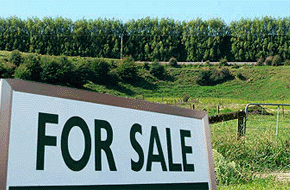
All eyes are on house prices, which have been growing at about 7+% year on year, 10% in Auckland.
But the Reserve Bank is also keeping an eye on rural credit growth, and the dairy sector in particular.
There are anecdotal stories of high prices being paid for irrigated Canterbury dairy land, but are they becoming the norm?
Milk powder prices are up 50% year on year, but rural credit is is only up 4% over the same period.
DairyNZ's report released in May 2013 for the 2011/12 dairy season showed that 'term liabilities' (ie debt) of owner operators rose to 43.3% of assets from 40.0%. (Sharemilkers reduced their debt to 33.7% from 44.3% the year before.)
Rising product prices have not resulted in rising land prices, however.
Over the past three years, dairy land prices have been generally stable.
REINZ data shows that in the North Island dairy regions, while median prices vary, they are not on an upward trend.
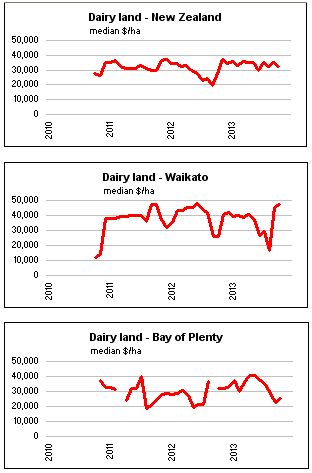
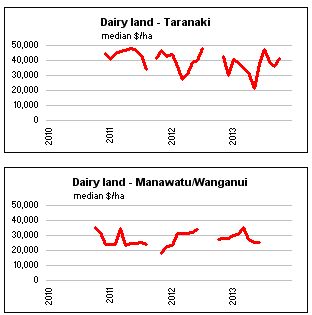
In the main South Island dairy regions, the story is the same.
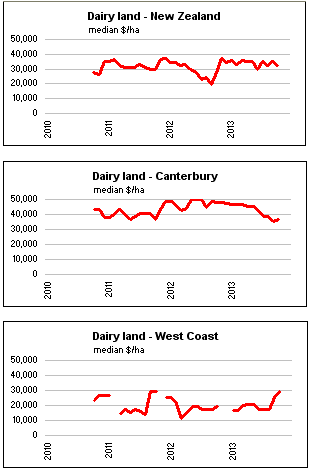
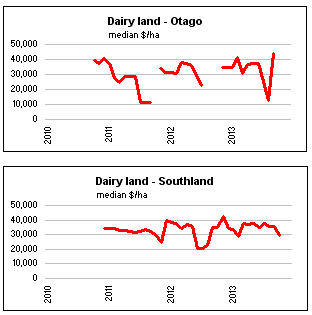
We are interested to hear reader's views on why prices for dairy land have not been rising.
5 Comments
I'd say dairy land price bubble did not get bigger during the past 2 years. Of course not, milk price was pretty week -- $5.8 ish; environmental regulations on dairy conversion, nutrient limit, water limit on quantity and quality are all extremely uncertain.
Let's see whether this and next season will make any difference given a record year for milk price.
....don't mention the word drought..just yet..
Rainfall Considerable variations in rainfall anomalies were observed across the country. Well below normal rainfall (less than 50 percent of October normal) was recorded throughout Northland, Auckland and Gisborne. Rainfall was either well below normal or below normal (50-79 percent of October normal) in Waikato (with the exception of the southwest of the region), Bay of Plenty and Hawke’s Bay. Below normal rainfall was also recorded in coastal mid-Canterbury and north-eastern Marlborough
http://www.niwa.co.nz/sites/default/files/nzcu_november_2013.pdf
28.5 C here yesterday with a SW wind, be much the same today but less wind . Average 1mm of rain per day for the last two months so not looking to much different to last year. Despite the other thread bemoaning the state of freshwater we spent last summer enjoying swimming most every day and ignoring the dr----t, what can you do.
Sharemilkers reduced debt? Simply a factor of increased stock values rather than profit paying down debt.
Here is a thought:
- put those $/ha in real terms (say cpi to NZ$ in yr 2000).
- put the $/ha against kgMS produced (in the last 7 years district average production has gone up say 300kg/ha)
the market is a patchwork, with subsets defined by price, or size.
So a small property may be sold at higher per ha, or per kgMS, because as buyers find it fundable (not the same as affordable).
For example:
http://www.stuff.co.nz/business/farming/dairy/9431482/Lively-bidding-pu…
Price-wise, it was attractive, with large dairy farms worth $12m to $15m falling outside the affordability range of many farming families.
.... sounds some needed it high to do something else..
Trademe has had other examples from same spot on and off for 3 years...





We welcome your comments below. If you are not already registered, please register to comment.
Remember we welcome robust, respectful and insightful debate. We don't welcome abusive or defamatory comments and will de-register those repeatedly making such comments. Our current comment policy is here.